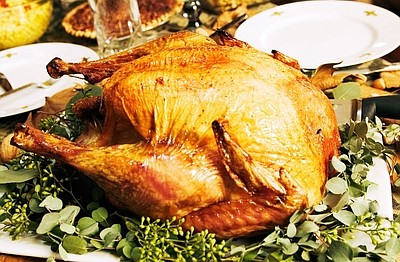The holidays are upon us, which means dinner with family and friends and a strong desire to put together a memorable meal.
There are downsides when considering what to prepare, and foodies are warning professional and amateur chefs not to get too creative.
“The worst food mistake you can make for the holidays is to try a new recipe when entertaining family and friends,” said Nathan Grieve, founder of Project Hatch, a community website that features case studies from entrepreneurs who’ve created successful businesses and nonprofits so aspiring founders can learn from them. “There is a saying in the athletics community that needs to be applied more often on to cooking. It goes, ‘Nothing new on race day.’”
The entrepreneur spoke from experience.
“When I was younger, I would make macaroni and cheese every year. One year, I wanted the dish to look more festive, and so I added a gold-yellow food coloring,” Grieve said. “After mixing it in, the sauce went completely fluorescent yellow and looked radioactive. Just looking at it put my family off.”
Among the worst food mistakes is making sure not to undercook meat and other items, said Melissa Morris, a writer for EffortlessInsurance.com, who has degrees in exercise science and educational leadership.
“Two that come to mind are eating raw cookie dough and not using a food thermometer for cooking meats,” Morris said. “Raw cookie dough can cause foodborne illnesses like salmonella, because of the raw eggs and raw flour. Salmonella can cause vomiting, abdominal cramping, diarrhea, and dehydration.
“A food thermometer ensures that the food is cooked to a proper temperature and is safe to consume. Undercooked or raw meat can cause foodborne illness like E Coli and salmonella.”
Katie Heil, certified food safety professional with experience in the food mistakes people can make during the holidays, said five common mistakes are easily avoidable.
She lists them as thawing meat incorrectly; not cooking meat long enough; not taking steps to prevent cross-contamination; not washing hands often enough, and leaving food out too long.
“Never thaw frozen meat on the counter. Room temperature is generally within the temperature danger zone— 41°F – 135°F— when bacteria grow the fastest,” Heil said.
When thawing meat in the refrigerator, cooks should plan on one day for every five pounds of meat. When thawing in water, fill a container with enough water to submerge the entire cut of meat and drop in the unopened package, according to Heil.
The water should be as close to 40°F as possible. The water should be changed every 30 minutes, and cooks should plan on 2.5 hours for every five pounds of meat.
“Raw meat can carry bacteria such as E. coli. To kill all the bacteria living on your meat, you must cook it to the FDA’s recommended temperature. Don’t guess at the temperature— use a food thermometer to measure the internal temperature of the food.
The temperatures recommended for three common holiday types of meat are Turkey – 165°F; Stuffing that includes meat – 165°F; and Ham – 145°F.
Heil notes that many people use the same utensils for preparing raw meat as they do for cooking it. This can cross-contaminate your food, even if you cook it to recommended temperatures. Keep your food safe by switching to clean plates and utensils for cooking.
“You should also clean and sanitize your food thermometer between uses. You should also clean and sanitize your utensils, including knives and cutting boards, after using them on raw meat,” she said.
Washing hands with soap and water before and after handling raw meat is essential.
“Don’t use hand sanitizer if you can help it; it’s not as effective as scrubbing with soap. Rewash your hands anytime you think they may have become contaminated,” Heil continued.
Finally, never leave food (cooked or uncooked) out longer than two hours because its temperature can quickly fall into the temperature danger zone when bacteria grow the fastest.
“After two hours, you should put meat and other perishable foods into the fridge or freezer. If any food is left out for four hours or more, throw it away,” she said.
